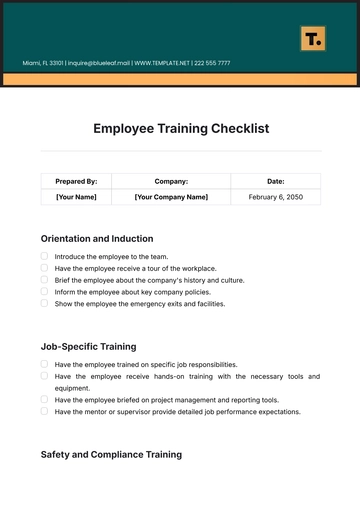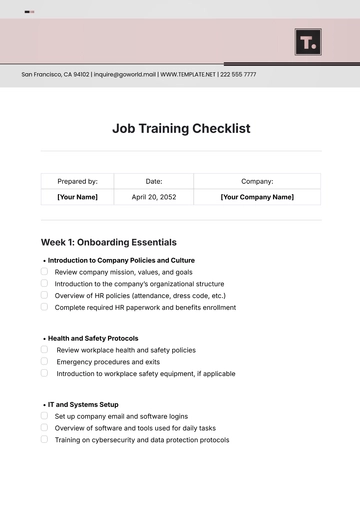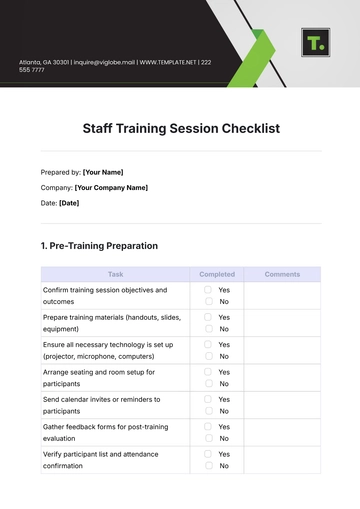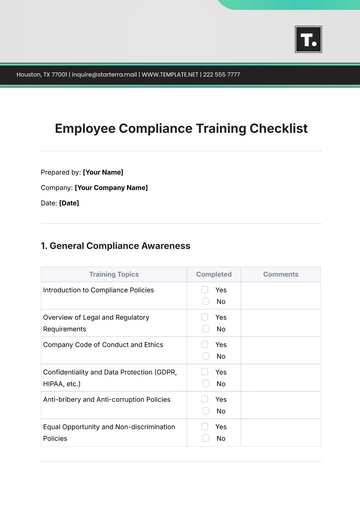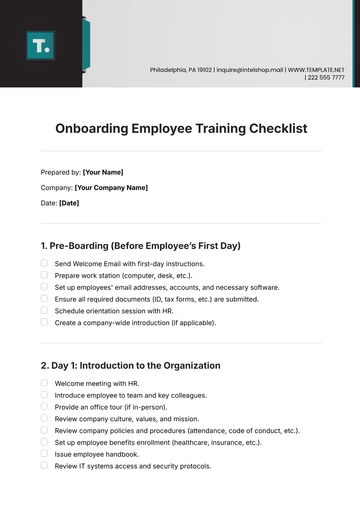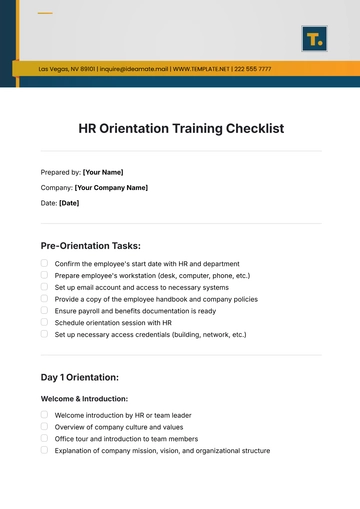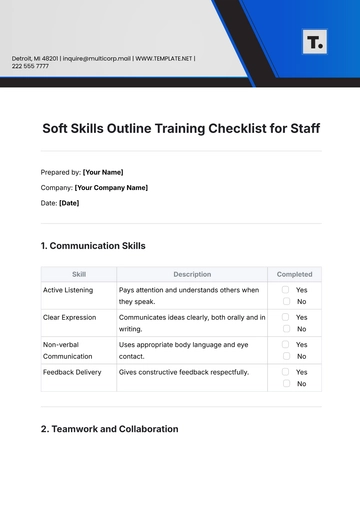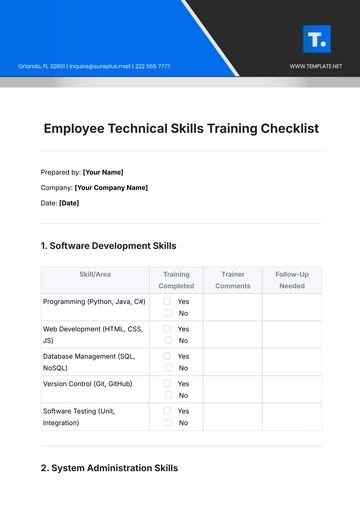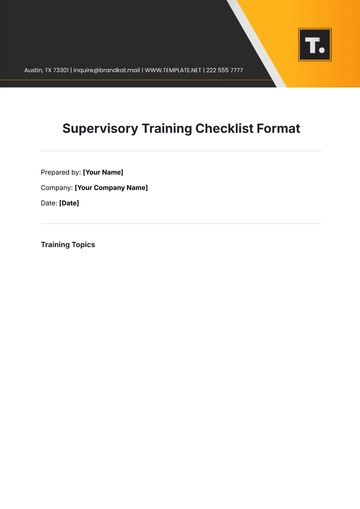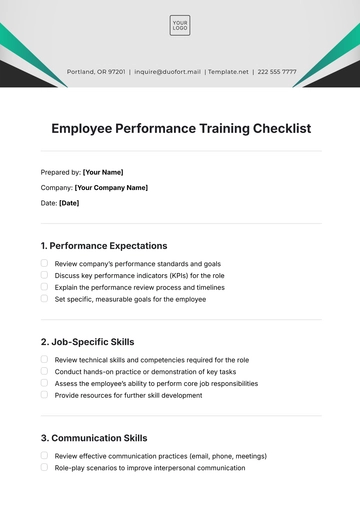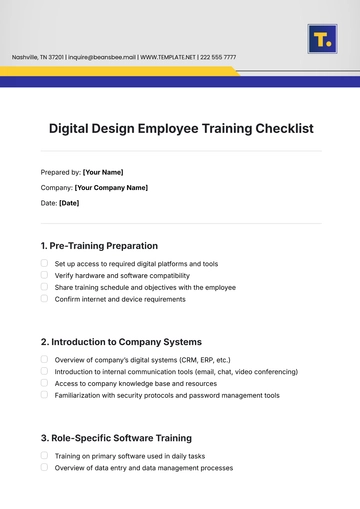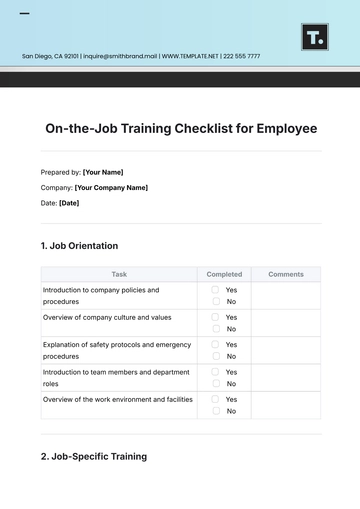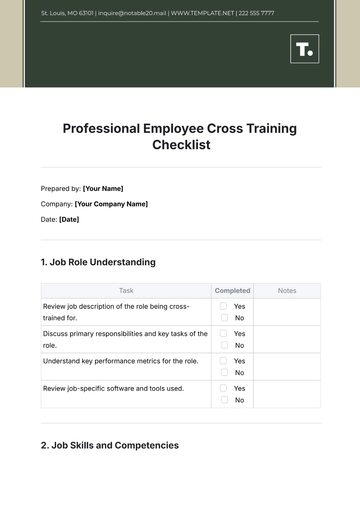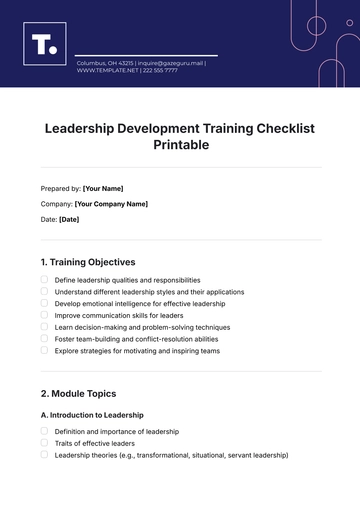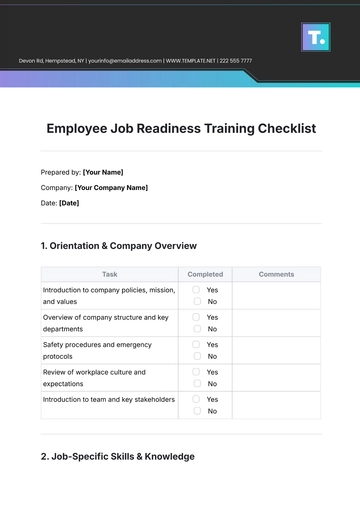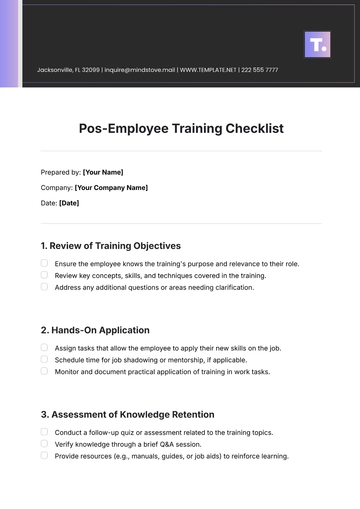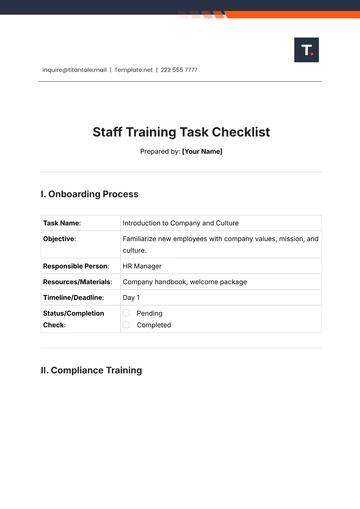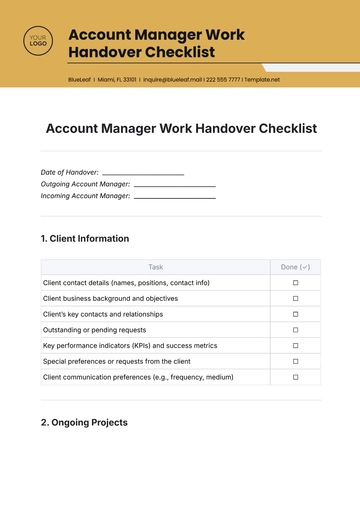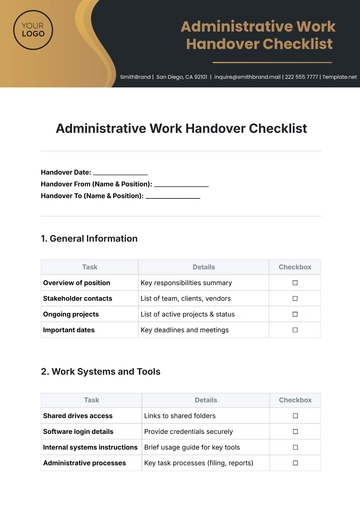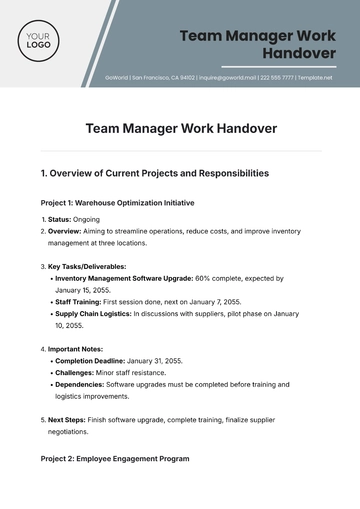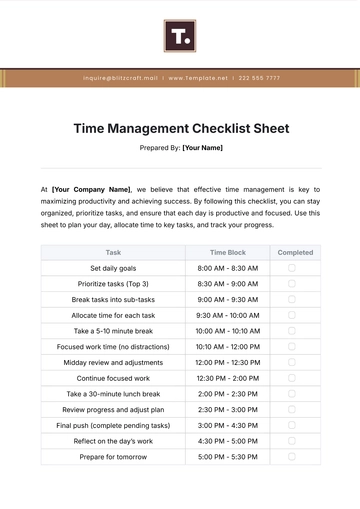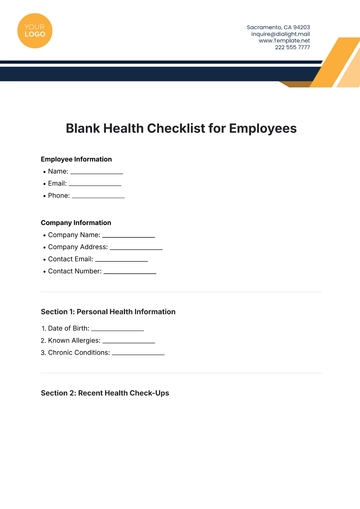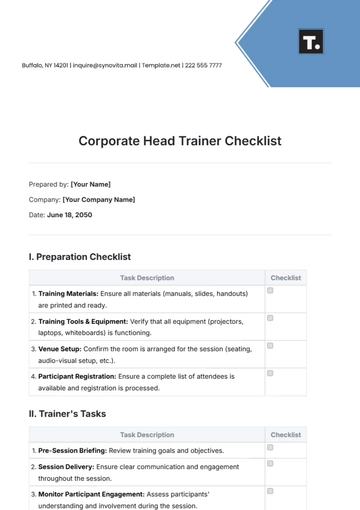Free Chemical Hazard Checklist
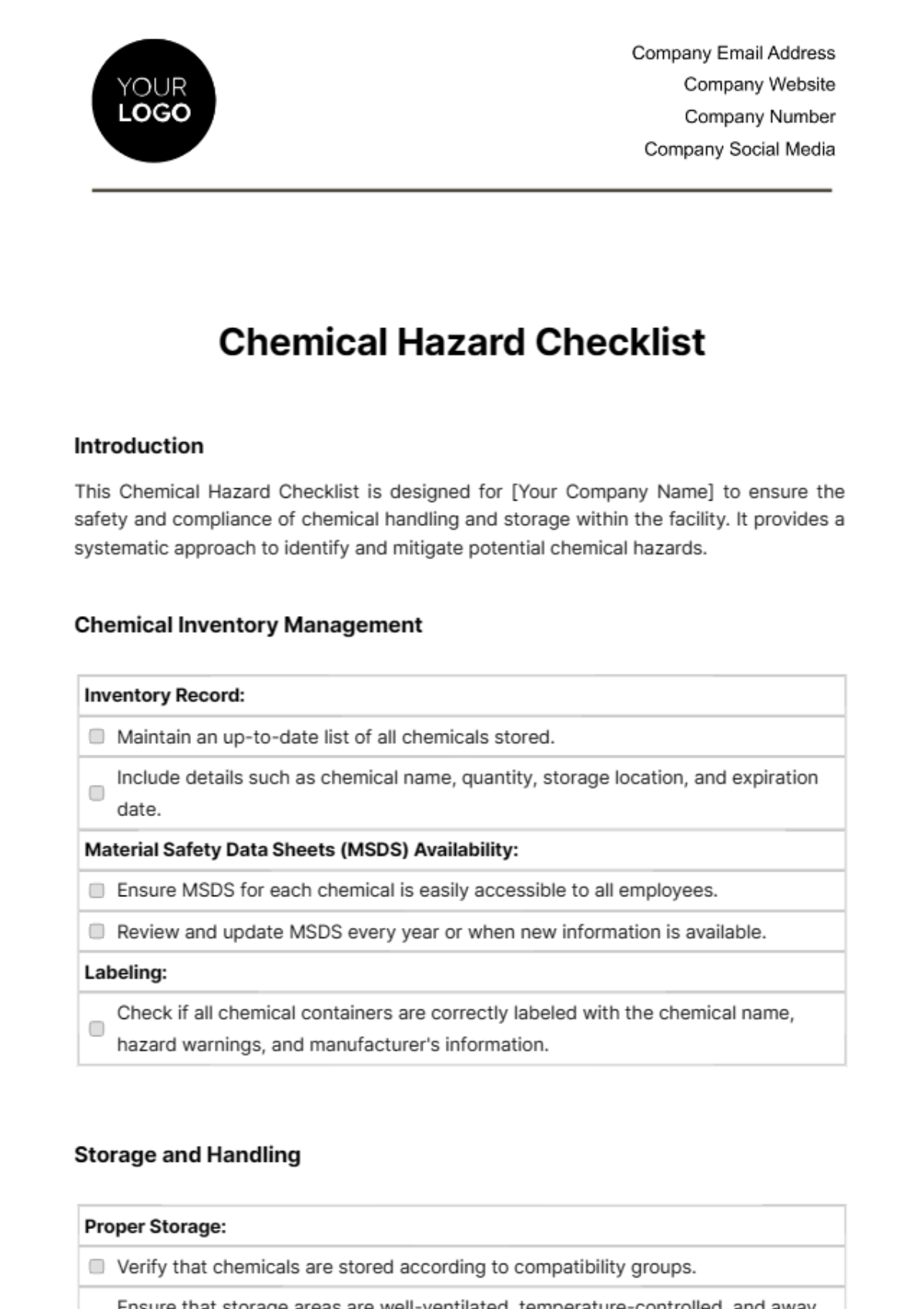
Introduction
This Chemical Hazard Checklist is designed for [Your Company Name] to ensure the safety and compliance of chemical handling and storage within the facility. It provides a systematic approach to identify and mitigate potential chemical hazards.
Chemical Inventory Management
Inventory Record: |
|
|
Material Safety Data Sheets (MSDS) Availability: |
|
|
Labeling: |
|
Storage and Handling
Proper Storage: |
|
|
Secondary Containment: |
|
Handling Procedures: |
|
|
Spill and Emergency Response
Spill Kits: |
|
|
Emergency Plan: |
|
|
Waste Management
Waste Disposal Procedures: |
|
|
Waste Storage: |
|
|
Health and Safety
Exposure Monitoring: |
|
|
Health Surveillance: |
|
|
This checklist is a comprehensive guide for [Your Company Name] to maintain a safe and compliant chemical handling environment. Regular review and updates of this checklist are essential to adapt to changing safety standards and regulatory requirements.
- 100% Customizable, free editor
- Access 1 Million+ Templates, photo’s & graphics
- Download or share as a template
- Click and replace photos, graphics, text, backgrounds
- Resize, crop, AI write & more
- Access advanced editor
Enhance workplace safety with the Chemical Hazard Checklist Template at Template.net. This editable and customizable template, equipped with our Ai Editor Tool, streamlines risk assessment processes. Effortlessly identify and mitigate chemical hazards to ensure a secure working environment. Safeguard your workforce with Template.net's innovative solutions for workplace safety.
You may also like
- Cleaning Checklist
- Daily Checklist
- Travel Checklist
- Self Care Checklist
- Risk Assessment Checklist
- Onboarding Checklist
- Quality Checklist
- Compliance Checklist
- Audit Checklist
- Registry Checklist
- HR Checklist
- Restaurant Checklist
- Checklist Layout
- Creative Checklist
- Sales Checklist
- Construction Checklist
- Task Checklist
- Professional Checklist
- Hotel Checklist
- Employee Checklist
- Moving Checklist
- Marketing Checklist
- Accounting Checklist
- Camping Checklist
- Packing Checklist
- Real Estate Checklist
- Cleaning Checklist Service
- New Employee Checklist
- Food Checklist
- Home Inspection Checklist
- Advertising Checklist
- Event Checklist
- SEO Checklist
- Assessment Checklist
- Inspection Checklist
- Baby Registry Checklist
- Induction Checklist
- Employee Training Checklist
- Medical Checklist
- Safety Checklist
- Site Checklist
- Job Checklist
- Service Checklist
- Nanny Checklist
- Building Checklist
- Work Checklist
- Office Checklist
- Training Checklist
- Website Checklist
- IT and Software Checklist
- Performance Checklist
- Project Checklist
- Startup Checklist
- Education Checklist
- Home Checklist
- School Checklist
- Maintenance Checklist
- Planning Checklist
- Manager Checklist
- Wedding Checklist
- Vehicle Checklist
- Travel Agency Checklist
- Vehicle Inspection Checklist
- Interior Design Checklist
- Backpacking Checklist
- Business Checklist
- Legal Checklist
- Nursing Home Checklist
- Weekly Checklist
- Recruitment Checklist
- Salon Checklist
- Baby Checklist
- Equipment Checklist
- Trade Show Checklist
- Party Checklist
- Hospital Bag Checklist
- Evaluation Checklist
- Agency Checklist
- First Apartment Checklist
- Hiring Checklist
- Opening Checklist
- Small Business Checklist
- Rental Checklist
- College Dorm Checklist
- New Puppy Checklist
- University Checklist
- Building Maintenance Checklist
- Work From Home Checklist
- Student Checklist
- Application Checklist
